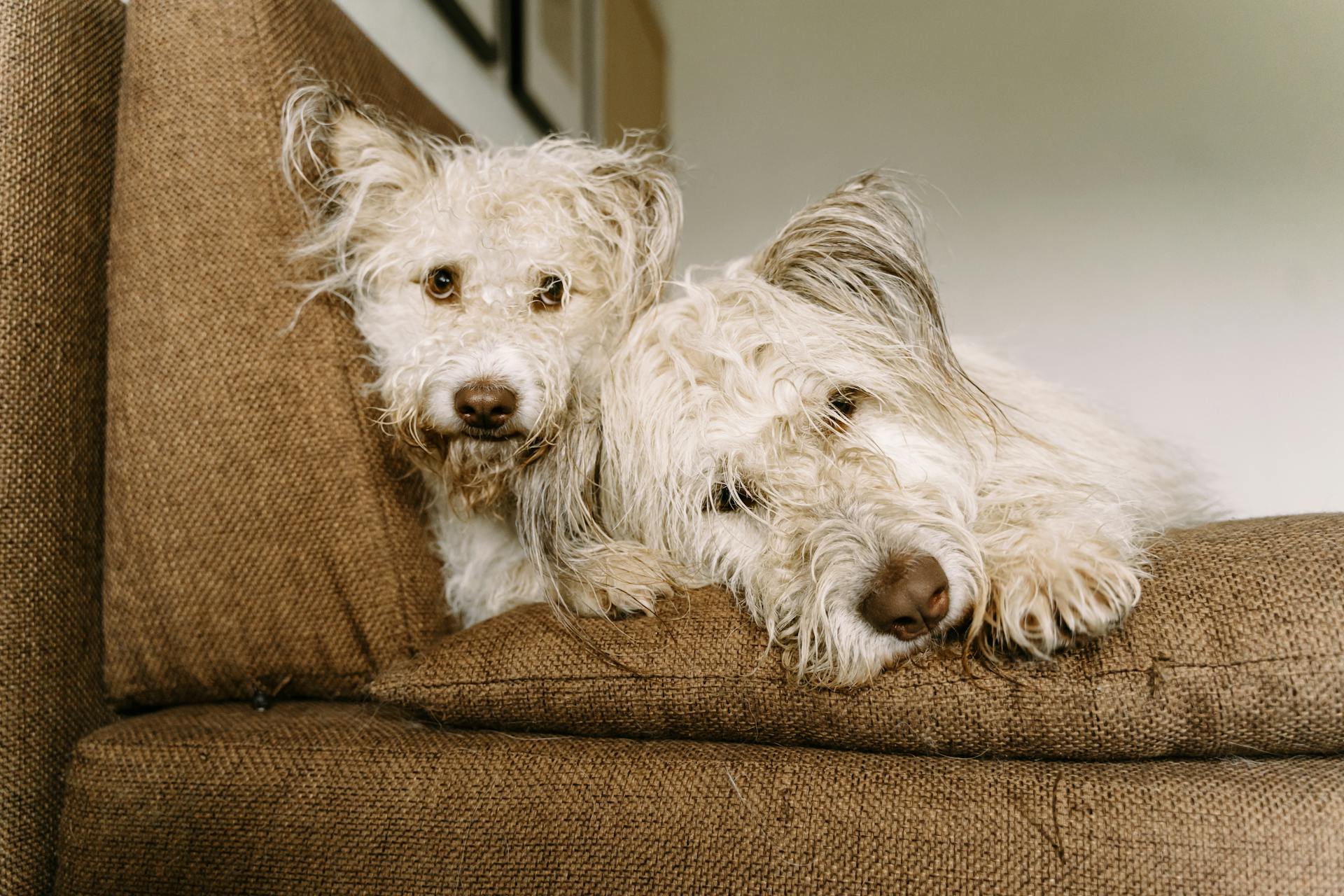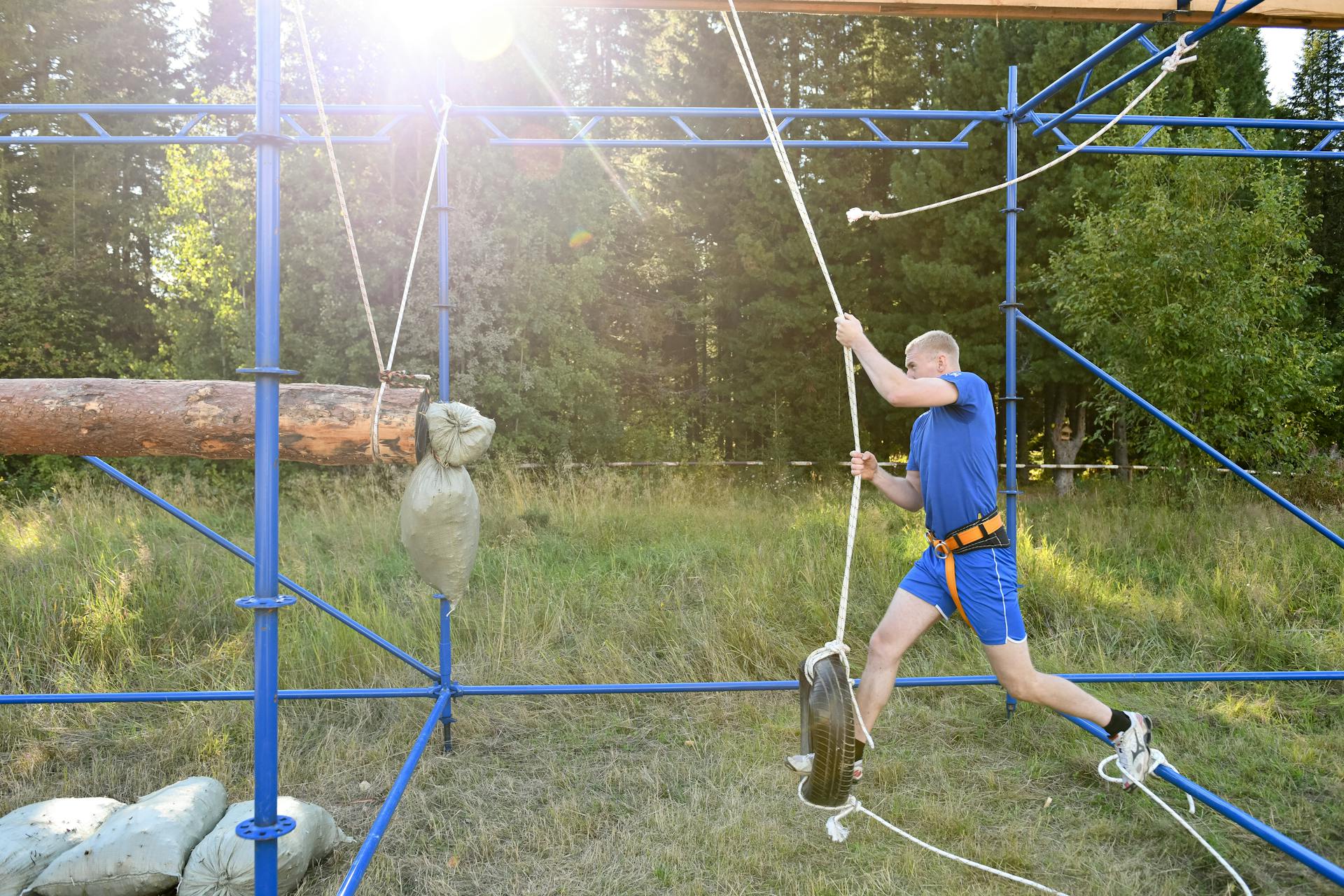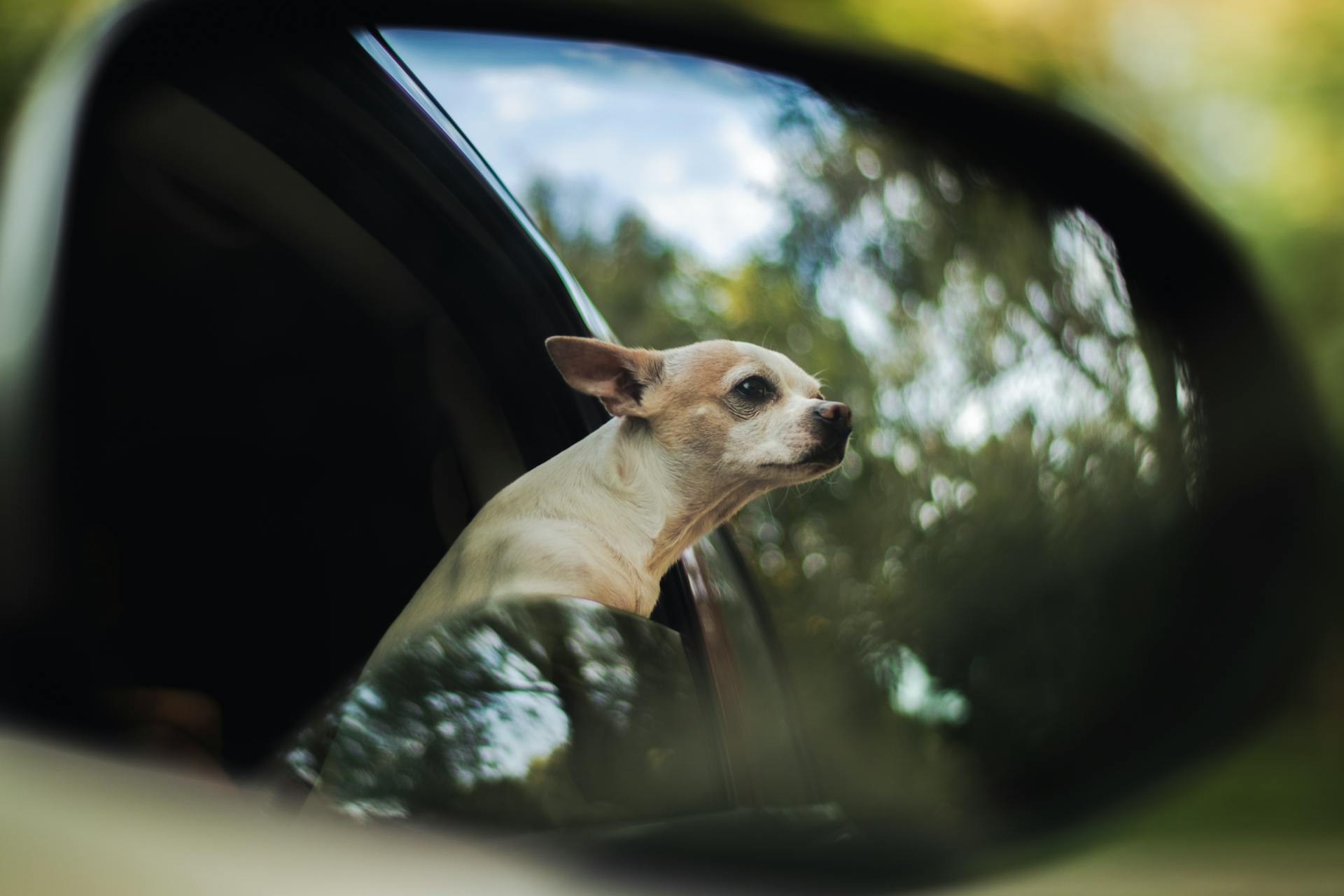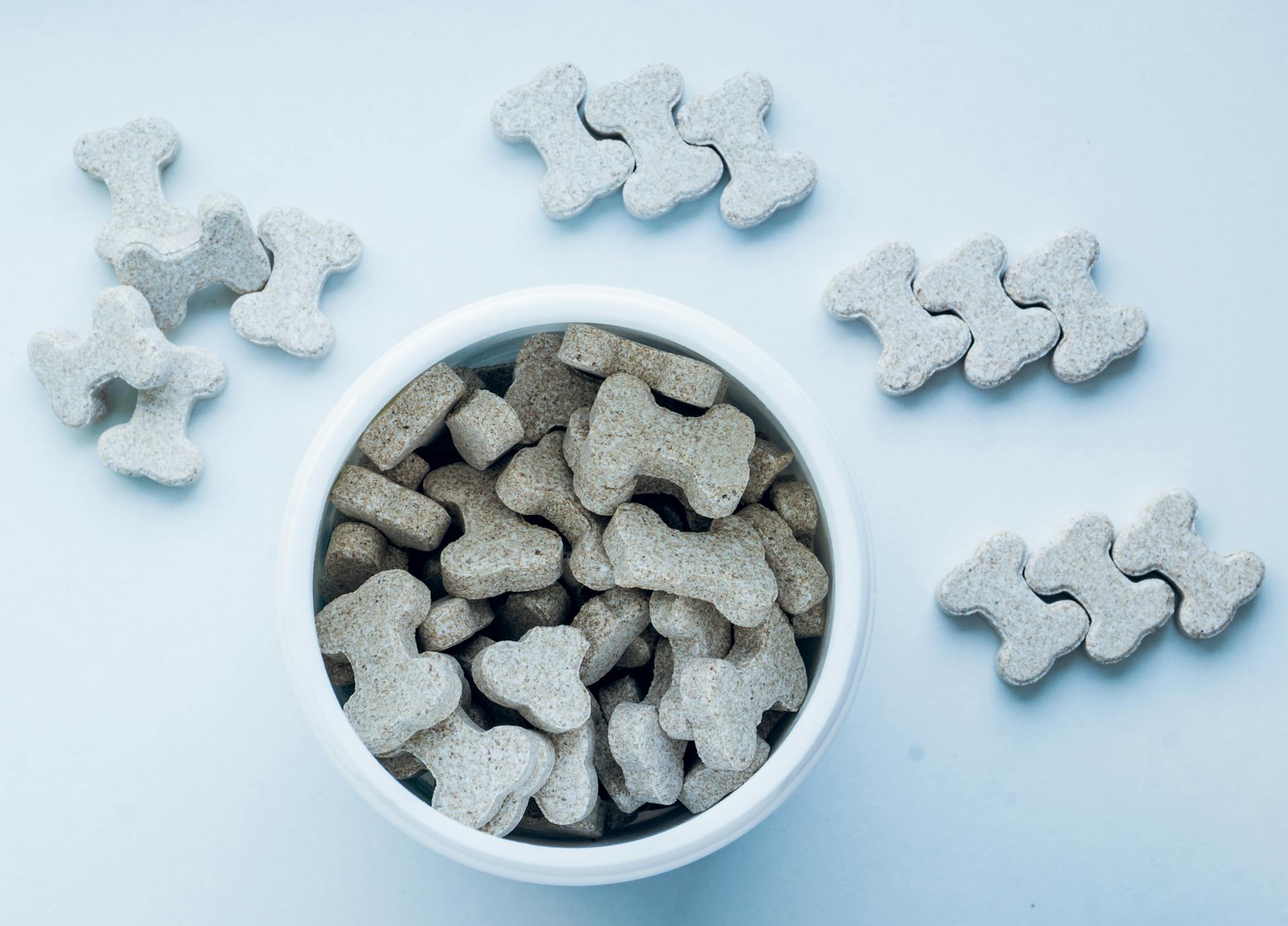
Separation anxiety in dogs is a common issue that can cause distress for both dogs and their owners. According to research, 14% of dogs suffer from separation anxiety, leading to destructive behavior and emotional distress.
If your dog is experiencing separation anxiety, it's essential to identify the underlying causes, such as changes in your work schedule, moving to a new home, or even the presence of other pets. In one study, 75% of dogs with separation anxiety were triggered by changes in their owner's routine.
To address separation anxiety, you can try providing your dog with a familiar object, such as an article of clothing or a blanket, that smells like you. This can help calm your dog and provide a sense of security.
Understanding Separation Anxiety
Separation anxiety in dogs is a common issue that affects many pet owners. It's estimated that up to 14% of dogs suffer from separation anxiety.
Dogs with separation anxiety often exhibit destructive behavior when left alone, such as chewing on furniture or digging up carpets. This is because they are trying to cope with the stress of being separated from their owners.
The exact cause of separation anxiety is unknown, but it's believed to be linked to changes in a dog's environment or routine. For example, a move to a new home or a change in work schedule can trigger separation anxiety in some dogs.
Some breeds are more prone to separation anxiety than others, including German Shepherds, Labrador Retrievers, and Chihuahuas. These breeds are often described as "velcro dogs" because they have a strong attachment to their owners.
Dogs with separation anxiety may also exhibit other signs, such as barking, whining, or howling when left alone. They may even try to escape from their homes or yards in an attempt to follow their owners.
The good news is that there are many effective home remedies for separation anxiety in dogs. By understanding the causes and signs of separation anxiety, pet owners can take steps to prevent and alleviate this condition in their furry friends.
Suggestion: Leaving a Dog at Home While at Work
Treatment and Management
To successfully treat separation anxiety in dogs, it's essential to identify the signalment and determine the diagnosis. This involves understanding the dog's breed, age, and medical history to pinpoint the root cause of the anxiety.
Create a safe haven for your dog to relax in when you're not around. This can be a mat, open crate, or safe haven room where your dog feels comfortable and secure.
To manage hyper attachment, provide a food-dispensing toy, such as a Kong toy, to keep your dog occupied and calm. This can be especially helpful when you're getting ready to leave the house.
A stay cue can also be used as a calming exercise. Work up to a 30-minute stay exercise, but remember to only use the stay cue for training, not when you're actually departing.
Establish a baseline and track your dog's progress regularly. This will help you identify any changes or improvements in their behavior.
Always avoid punishing your dog for separation anxiety behaviors. This can exacerbate the problem and make it harder to treat.
Here are some key steps to managing separation anxiety in dogs:
- Identify Signalment
- Determine Diagnosis
- Create Safe Haven
- Investigate Medical Therapy
- Establish Baseline & Track Progress
- Manage Hyper Attachment
- Desensitize to Departures
- Always Avoid Punishment
Desensitization and Training
Desensitization is a crucial step in helping your dog overcome separation anxiety. Desensitization to actual departures can be achieved by starting with brief departures and gradually increasing the duration. It's essential to videotape your dog's behavior to determine the optimal departure time, as even a few minutes too long can cause distress.
To begin desensitization, approach the door, touch it, open it slightly, and close it without leaving. This will help your dog become accustomed to the departure cues without feeling anxious. The length of each departure should be gradually increased, but not too quickly, as this can backfire and increase your dog's distress.
You can also use crate training to provide your dog with a safe space to relax. Teach your dog to associate the crate with positive experiences, such as chew toys and food-releasing puzzle toys. This will help your dog feel more comfortable and secure when left alone.
Intriguing read: Crate Train
Here are some steps to desensitize your dog to departure cues:
- Approach the door and touch it
- Open the door slightly and close it
- Gradually increase the duration of departure
- Use high-value treats to associate departure cues with positive experiences
Remember, the goal is to help your dog feel comfortable and secure when left alone, not to crate them all day. With patience and consistency, desensitization and training can be an effective way to address separation anxiety in dogs.
Desensitization and Counter-Conditioning
Desensitization and Counter-Conditioning is a powerful technique to help your dog feel more comfortable when you're away. This process helps your dog learn to associate separation with positive experiences.
Desensitization involves gradually exposing your dog to the cues that signal your departure, such as picking up keys or putting on a coat, without actually leaving. This helps your dog learn to disassociate these cues from actual departures, as explained in Example 4. By introducing repeated exposure to departure cues, you can help your dog become less reactive to these triggers.
Counter-conditioning is the process of teaching your dog that separation has its rewards. Start by leaving your dog for very short periods of time and gradually lengthen the amount of time you're gone, as suggested in Example 8. If your dog is already conditioned to go into stress mode when they know you're leaving, try countering that reaction by using a high-value treat they really love.
To make your departure routine less distressing, desensitize your puppy to the signs you're about to go out. For example, pick up your keys or put on your coat, then go make dinner rather than heading to the car, as mentioned in Example 8. Even better, toss your puppy a high-value treat right before you touch your keys or coat.
Here's a summary of the steps involved in desensitization and counter-conditioning:
Remember, the goal is to teach your dog that separation is not a reason for stress or anxiety. By following these steps and being patient, you can help your dog feel more comfortable and secure when you're away.
Exercising Your Dog
Tiring out your dog physically and mentally is a great way to help with separation anxiety. Long walks, especially on new routes, allow your dog to sniff and explore, which can be very tiring.
Take your dog on a long walk, then bring out puzzle toys or long-lasting treats like a stuffed, frozen Kong or a frisbee smeared with peanut butter. This will keep your dog engaged and stimulated.
Doggy daycare is a fantastic option for dogs with separation anxiety, but it might not be feasible for everyone. If daycare isn't an option, consider hiring a dog walker or pet sitter to check in midday.
Anything more interesting than the fact that you're gone can help distract your dog from separation anxiety. This could be a new toy or a different activity to keep them engaged.
Recommended read: Is Dog Daycare Good for Dogs
Manage Hyper Attachment
Managing hyper attachment in dogs is crucial to help them cope with separation anxiety. This involves encouraging independence from the owner and creating a safe haven for the dog to relax in.
To start, provide a mat, open crate, or safe haven room where the dog can receive attention while calmly sitting or lying down. This area will eventually become the dog's go-to spot when the owner leaves.
A great tool to use in this process is a food-dispensing toy, such as a Kong toy. Fill the toy with the dog's favorite treats or kibble to keep them occupied and stimulated.
For more insights, see: Healthy Mind Canine - Separation Anxiety Training
As you work with the mat, remember to pick it up between training sessions. Using the mat as a comfort cue can be beneficial, but only when the owner is present and the dog is learning to be relaxed.
A stay cue can also be used as a calming exercise, working up to a 30-minute stay. However, it's essential to only use the stay cue for training, not when the owner actually departs the home.
It's also helpful to let the dog participate in determining its safe place, a location the dog itself chooses often, such as the owner's bedroom.
Clinginess and Abnormal Behavior
Clinginess can be a major contributor to separation anxiety in dogs. Clingy behavior is not the same as a normal dog wanting attention, it's a sign of excessive attachment.
Don't encourage overly clingy behavior by getting overly emotional when you leave or return home. Instead, play it cool and keep things calm, even when greeting your dog.
To develop independence in your puppy, start by teaching them to stay in another room, even when you're at home. Begin with short lengths of time and gradually increase the duration.
Here are some common signs of excessive clinginess in dogs:
- Following you everywhere in the house
- Whining or barking when you leave the room
- Getting anxious when you're preparing to leave the house
These behaviors can be a sign of underlying separation anxiety, so it's essential to address them early on.
Clinginess: Playing It Cool
Playing it cool is key when it comes to teaching your puppy not to be overly clingy. This means not encouraging their attachment to you and instead developing their independence.
To start, teach your puppy to be on their own in another room, even when you're at home. This will help them learn to stay calm when you're not around. Begin with short lengths of time, like 5 or 10 minutes, and gradually increase the duration.
A solid stay is another way to battle excessive attachment. Teach your puppy to stay in one place without getting up or following you. This will help them learn to be calm and independent.
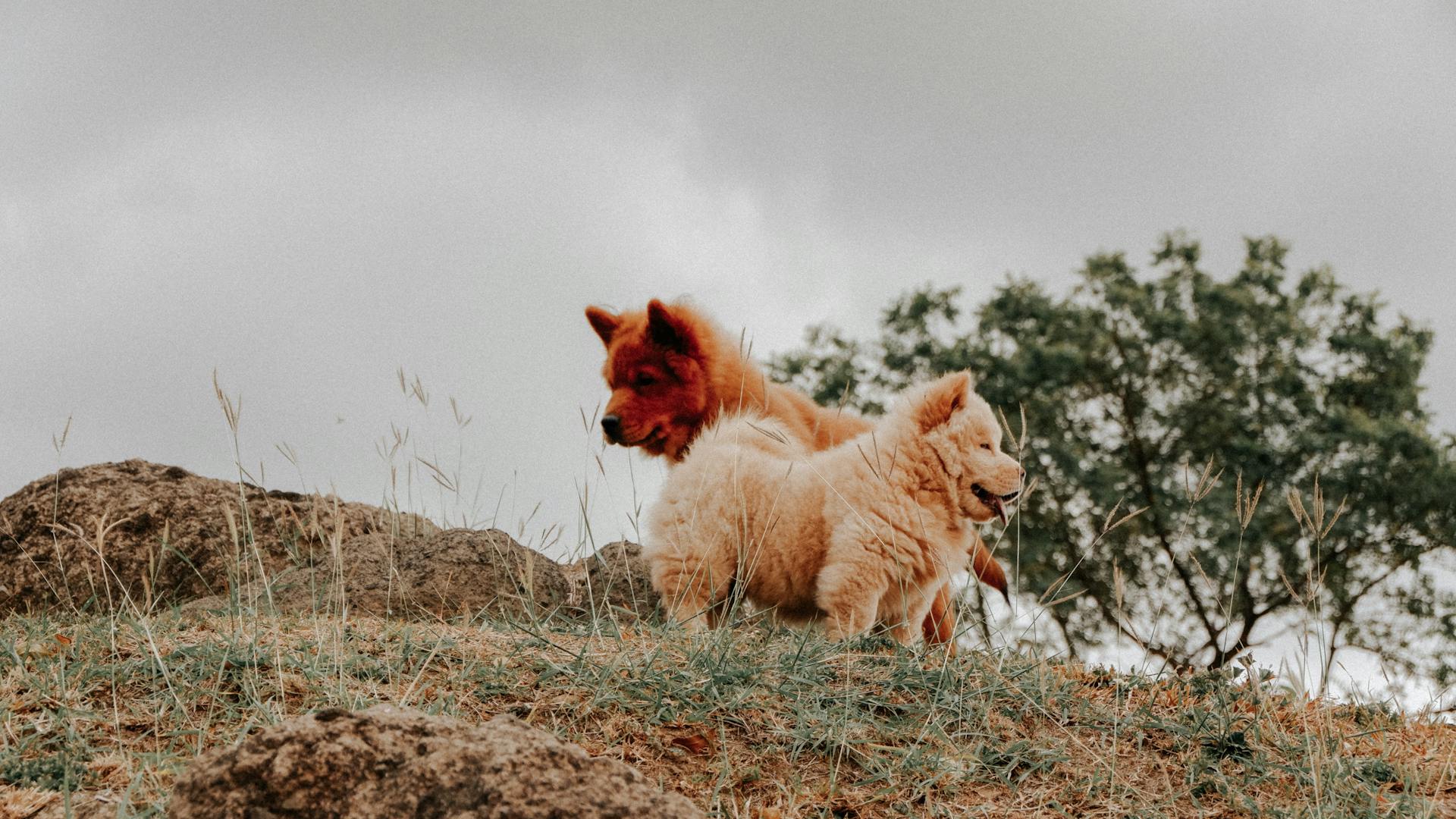
It's also essential to play it cool when you leave or return home. Avoid getting overly emotional or making a big fuss, as this can make your puppy anxious. Keep things calm and low-key, and greet them with love but not over-the-top enthusiasm.
If you do return home to find damage or accidents, don't punish your puppy. This will only add to their anxiety and make the problem worse. Instead, calmly address the issue and reassure your puppy that everything is okay.
Abnormal Canine Behavior
Separation anxiety is a serious condition that's often mistaken for normal canine behavior. It's not just about a dog being a little clingy or whining when you leave the house.
Dogs can exhibit stress in many ways, and it's essential to identify the signs of separation anxiety before it's too late. According to research, some common symptoms include anxious behaviors like pacing, whining, or trembling while you're gone or as you prepare to leave.
Some owners may think that destroyed cushions or potty accidents are just a result of boredom or mischief, but it's crucial to rule out inadequate training first. Does your dog truly understand good manners, even when you're not watching them? Are they 100% potty trained?
If you suspect that your dog may be suffering from separation anxiety, it's essential to get to the bottom of the issue. One way to do this is to set up a video camera in the space your dog spends most of their time to see what they get up to when you're not at home.
Here are some common signs of anxiety in dogs:
- Whining
- Barking/howling
- Pacing
- Trembling
- Panting
- Drooling
- Destructive behavior such as scratching and chewing at doorways or furniture
- Urinating/defecating
These behaviors can be a sign of separation anxiety, but they can also be caused by other factors, such as boredom or medical issues. It's essential to consult with a veterinarian to rule out any underlying medical problems before seeking help from a behaviorist.
If you identify signs that your dog may be worried, talk to your vet about a referral to a behaviorist. Treatment programs usually include elements such as desensitization and counter-conditioning, changing associations your dog may have made about the events leading up to you leaving the house, and ensuring your dog has had sufficient exercise and mental stimulation.
Frequently Asked Questions
What is a natural sedative for dogs?
Valerian root is a natural sedative for dogs, promoting relaxation and calming nerves in stressful situations. It's a safe and gentle option to consider for your furry friend's well-being.
Does Benadryl help dogs with separation anxiety?
Benadryl may help with mild anxiety in dogs, but it's not a suitable solution for separation anxiety, a more severe and complex issue. If your dog suffers from separation anxiety, consult a veterinarian for a more effective treatment plan.
Sources
- https://www.humanesociety.org/resources/separation-anxiety-dogs
- https://todaysveterinarypractice.com/behavior/on-your-best-behavior-canine-separation-anxiety/
- https://www.akc.org/expert-advice/training/dog-separation-anxiety/
- https://www.webmd.com/pets/dogs/features/dog-separation-anxiety-symptoms-and-solutions
- https://www.dogstrust.org.uk/dog-advice/understanding-your-dog/separation-anxiety-in-dogs
Featured Images: pexels.com
